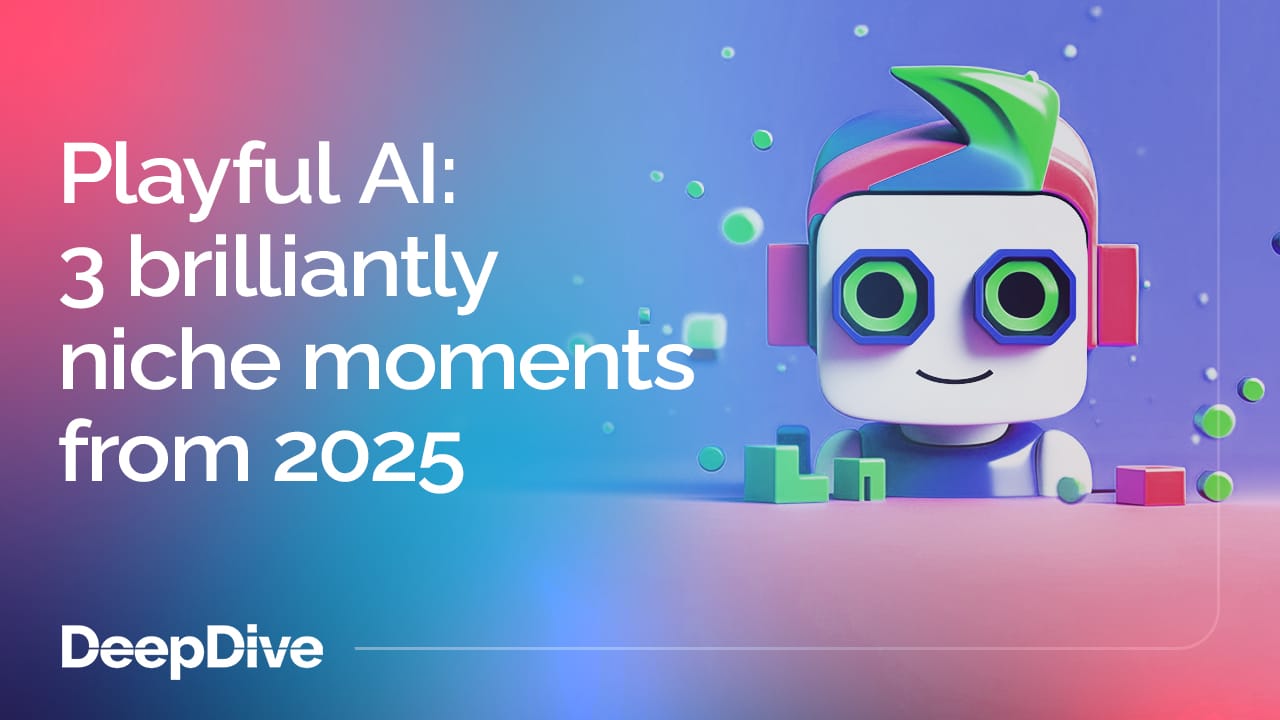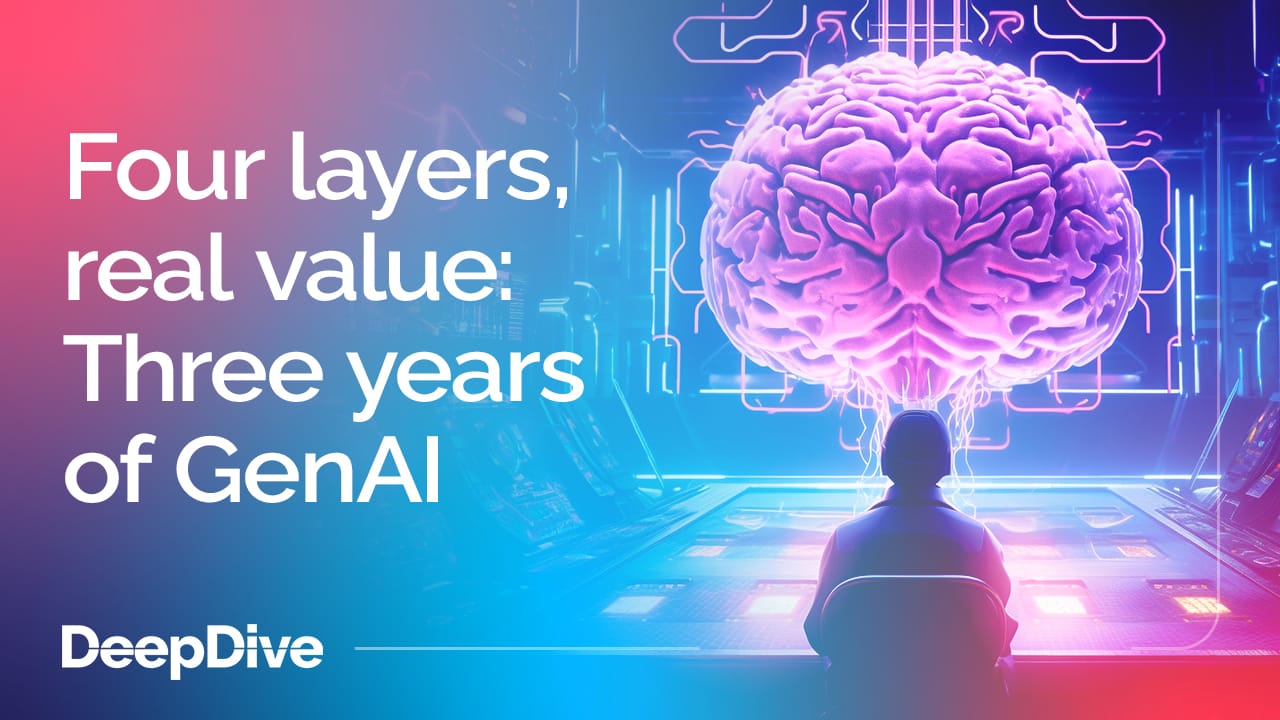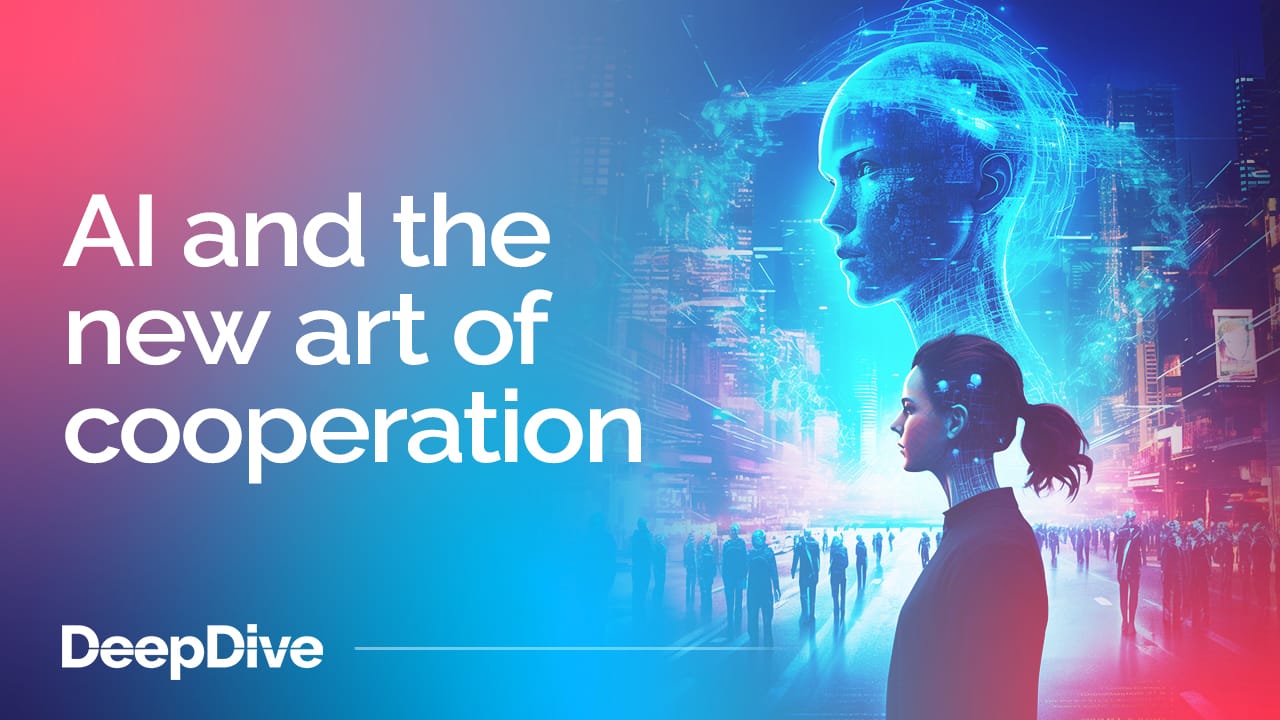

Four layers, real value: Three years of GenAI

Welcome to the 4 new deep divers who joined us since last Wednesday.
If you haven’t already, subscribe and join our community in receiving weekly AI insights, updates and interviews with industry experts straight to your feed.
DeepDive
Nearly three years on from the public launch of ChatGPT in November 2022, the conversation around generative AI feels very different now. In 2023, we were still asking whether this was hype or history-making reality. Today, the numbers (and the way tech leaders talk about AI) show a field that’s maturing fast, but still wrestling with how to turn pilot programs into profit.
Last year, we asked Anil Cheriyan (Digital AI Leader; Board Member, Centre for Astrophysics, Harvard & Smithsonian) how organisations should approach the next phase of GenAI adoption. He said:
“Start small, and iterate and build value. Don’t get stuck on meaningless POCs that will never be scalable, overly ambitious scenarios that AI isn’t ready for, or where you just don’t have the data available.”
It’s a mindset that still stands this year – because it fits neatly with what the latest industry research is telling us.
AI investment is growing, and it’s flowing in specific directions
The 2025 AI Index Report from Stanford HAI shows private investment in generative AI reached USD $33.9 billion in 2024 (that’s an 18.7% rise on 2023) and now accounts for more than 20% of all AI-related private investment.
Meanwhile, US private AI investment (all AI, not just GenAI) reached $109.1 billion in 2024 – nearly 12× China’s $9.3 billion and 24× the UK’s $4.5 billion.
As Cheriyan told us in 2024, the industry is evolving on four levels:
“At the base level we have infrastructure transformation – with companies such as Nvidia creating extremely powerful GenAI-based hardware. The next layer is the large language model space. The third is data engineering – connecting these models to available data sources. And the fourth is industry-specific application: streamlining or creating human-assisted processes.”
He added that the lower two layers are capital-intensive, and the top two are human-expertise-intensive.
We’re seeing broad adoption, but real value depends on workflow change
McKinsey’s 2025 state of AI survey reports that 78% of respondents say their organisations now use AI in at least one business function – up from 72% in early 2024 and 55% a year earlier.
But the biggest EBIT impact shows up when companies redesign the work: workflow redesign is the single attribute most associated with bottom-line effect from gen-AI use, and 21% of organisations using gen-AI say they’ve fundamentally redesigned at least some workflows.
Governance is still uneven. Twenty-seven percent of organisations that use gen-AI say all outputs are reviewed before use – while a similar share say 20% or less are reviewed. The gap between experimentation and robust enterprise-wide value is still wide.
Cheriyan’s call to “start small and iterate” speaks directly to this. Begin with contained, high-frequency workflows where you can measure time-to-value in weeks. Build data readiness and risk management as you scale. Then channel talent into those data-engineering and application layers so foundational spending doesn’t stall in proof-of-concept purgatory.
From pilots to production
For leaders, three years of AI integration have shown that the GenAI gold rush has moved beyond novelty. Investment is climbing; infrastructure and model capabilities are advancing at pace. But real competitive advantage now depends on:
- Identifying concrete, valuable workflows rather than chasing grand demos.
- Investing in data quality and integration to feed models effectively.
- Designing governance where humans review and shape outputs at the point of use.
- Focusing scarce talent on building and scaling industry-specific apps.
It’s a shift from hype to hard engineering and organisational change – the kind of rewiring we can see clearly in McKinsey’s research, and that Cheriyan champions.
So on GenAI’s third birthday we’re not focused on flashy chatbots. We’re deeply interested in the process of redesigning work itself – with the right strategy, data, risk, controls, and skills to capture value at scale.
Be a part of the conversation at DeepFest 2026. Register now to secure your place.





